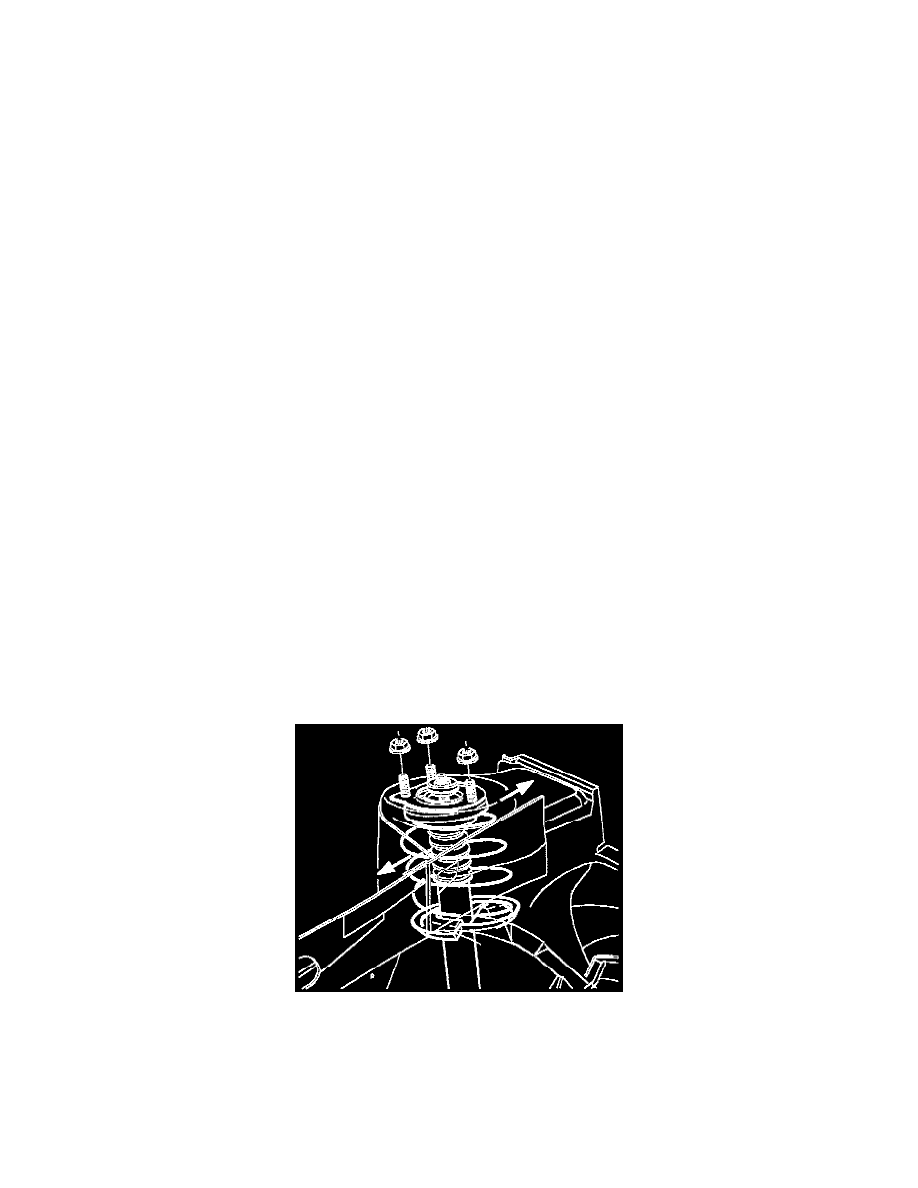SW2 L4-1.9L DOHC VIN 7 (1997)

B: 105 mm (4.1 in.)
Measure the curb trim height from the level surface the vehicle rests on to the bottom horizontal surface of the rocker panel. Do not measure from
the rocker/jacking flange.
Curb Trim Height:
J (Front Rocker Height Range): 201 to 233 mm (7.8 to 9.1 in.)
K (Rear Rocker Height Range): 202 to 234 mm (8.1 to 9.5 in.)
Measuring Alignment Angles
IMPORTANT: When measuring alignment angles, it is critical that the vehicle curb trim height be within specifications. If not correct, add or remove
weight until trim height is correct. Refer to "Curb Trim Heights" in this section.
IMPORTANT: When performing a wheel alignment after any suspension system component removal and installation, the vehicle must be driven
and/or the suspension system worked (manually jounced at least 20 times) to allow components to locate properly before alignment adjustment.
1. Install alignment equipment in accordance with the equipment manufacturers instructions.
2. Adjust tire pressures to correct specifications
a. 207 kPa (30 psi) tire pressure-Front Tires
b. 179 kPa (26 psi) tire pressure-Rear Tires
3. Check cradle to body alignment at the two front cradle alignment holes using a 9/16 in. rod. If cradle to body alignment is not correct, loosen
cradle fasteners and align cradle to body.
4. Measure alignment angles for each wheel.
Cross camber and cross caster specifications refer to the difference between the left and right side angles.
Cross camber and cross caster can influence vehicle steering pull tendencies. Usually, alignment results will be best when these measurements are
as close to zero as possible.
(L) - (R) = CROSS
Front Caster Adjustment
IMPORTANT: The front wheel caster setting is fixed by body structure geometry and the fixed lengths of suspension components. Therefore, front
caster should not vary under normal circumstances. If the caster angle is found to be out of specification, check for bent suspension components, bent
body structure, worn tension strut bushings and proper alignment measuring techniques. Only when the above criteria are found to be correct, perform
the following procedure:
1. Lock steering wheel in the straight ahead position.
2. Remove and discard strut assembly to body attachment nuts.
3. Slide strut forward or rearward in the body in the direction of desired caster angle change.
